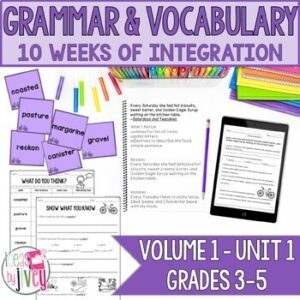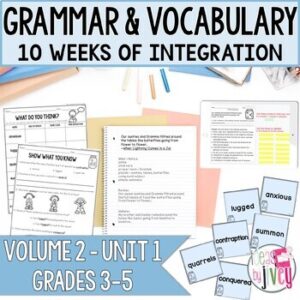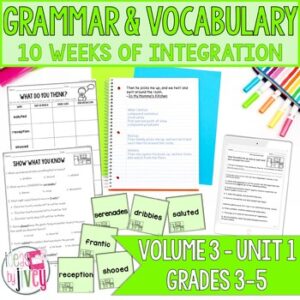Menu
The mentor sentences routine is a research-based, game-changing practice for you and your students. As you saw in the Day One post, students will notice the RIGHT things to do in writing, rather than the wrong. Then on Day Two, students will discuss the function of words in a sentence in order to learn how to communicate clearly in their own writing. On Day Three, students will use their revision skills to improve the mentor sentence.
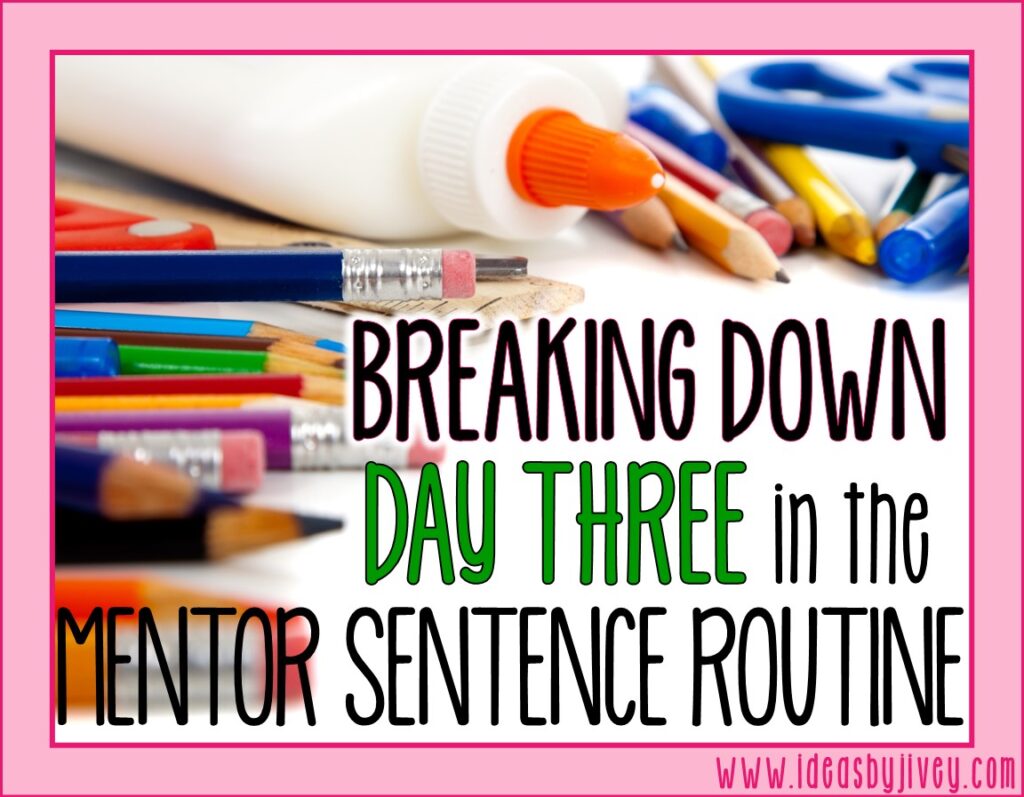
Students (and even adults!) often think revision means the writing is bad and needs to be fixed… but revision really is about making adjustments to the writing, or improvements to the language.
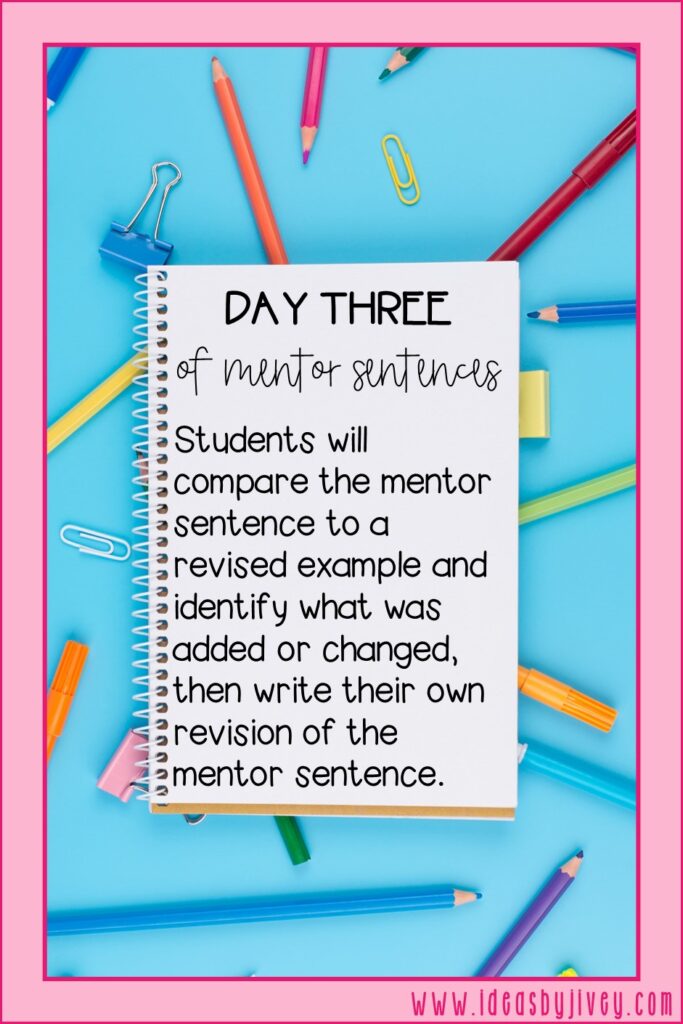
By showing students that even the mentor sentence could be revised, you are helping them understand that there are always things that can be done to revise their own writing, too.
Let’s get into how to implement the mentor sentence routine in 2nd-5th grade – day three, time to revise!
DIRECTIVE: Students will compare the mentor sentence to a revised example and identify what was added or changed, then write their own revision of the mentor sentence.
To start the revision exercise, once you’ve read the original mentor sentence together, share a revised model of the mentor sentence. Showing your own example of a revision should happen every week- NOT just in the beginning when you are introducing the routine. Providing “your version” digs into important higher-order thinking skills that help students compare and analyze, plus it helps get ideas flowing for what they can do for their own revisions.
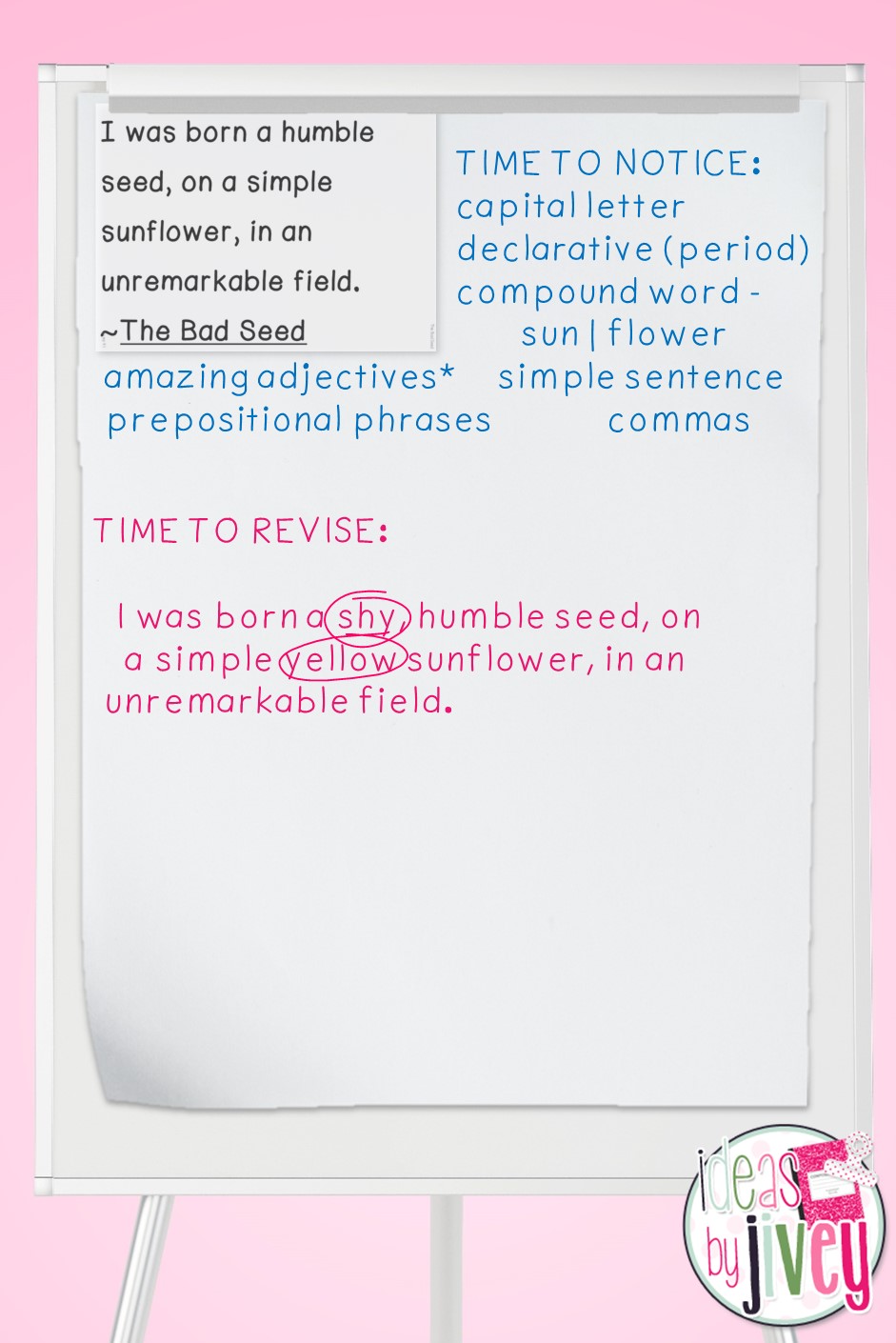
Ask students to share out what they notice that is different in your sentence than the original mentor sentence; discuss what you did to revise. Also, point out how it is the SAME as the original- it has the same meaning. We don’t want to change the intention of the sentence.
Students should try it on their own. You might want to guide the practice at first by letting them know what you want them to revise for (“See if you can revise the mentor sentence with one or two additional adjectives.”) but once they have the hang of it, I wouldn’t stifle their creativity… let them try things out and see what they can do! Maybe they have an idea for an adverb to better tell how or where- let them do it!
As they’re writing, walk around and take a peek at what they are doing. This will not only allow you to select some students to share theirs with the class, but it will also help you quickly correct students who might start off on the wrong foot.
Ask a few students to share their revised sentences with the class. This will give students another opportunity to compare to the original (ask the class to identify what these students did to revise). There won’t be enough time for every student to read their revised sentence to the class, but you can definitely take a minute to allow students to turn and do a pair-share with a partner.
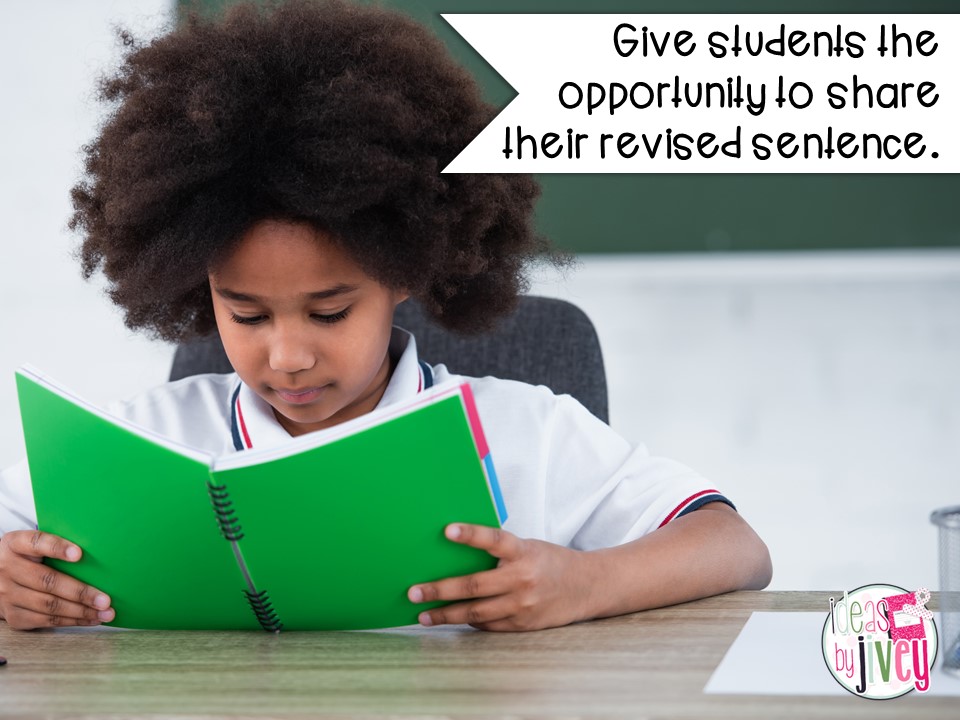
Some students may struggle with the idea of revising. You might want to rewrite the sentence, but add blanks in front of the nouns where you want students to think of new adjectives, for example. You could write it on the board for students to use for their practice, OR if students spend too much time just rewriting the sentence, you might provide a little strip to glue or staple into their notebook so that all they have to do is fill in the blanks.
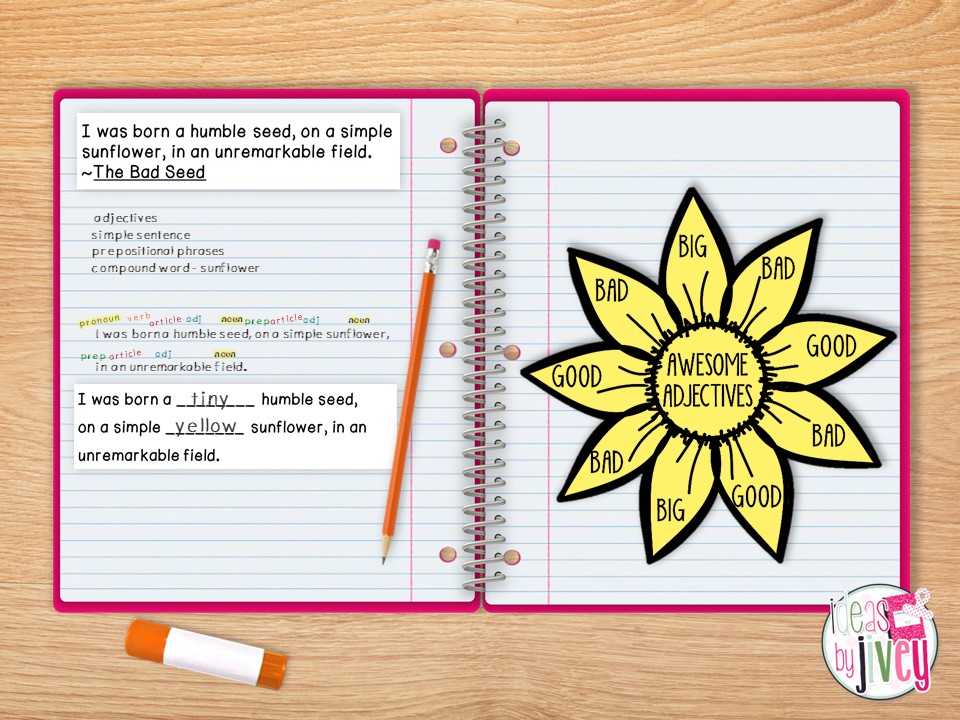
As mentioned above, this isn’t something you’d want to continue to do every week since it locks them into only specific things to try, but it definitely helps scaffold the process so that they can become more independent.
You want students to understand that revision is part of the writing process that isn’t done just when you’re finished drafting. You might take a few minutes every Wednesday after “Time to Revise” to revise their own writing. Even if they’re not done drafting a writing piece, they can still look at what they have written so far and decide, is there anything I can revise?
You might also decide to revise a few more sentences from the mentor text. In the book, The Bad Seed, there are several sentences where he uses the word “bad” to describe himself or to describe his behaviors. You could easily use the interactive activity from Day Two to help them revise these additional sentences.
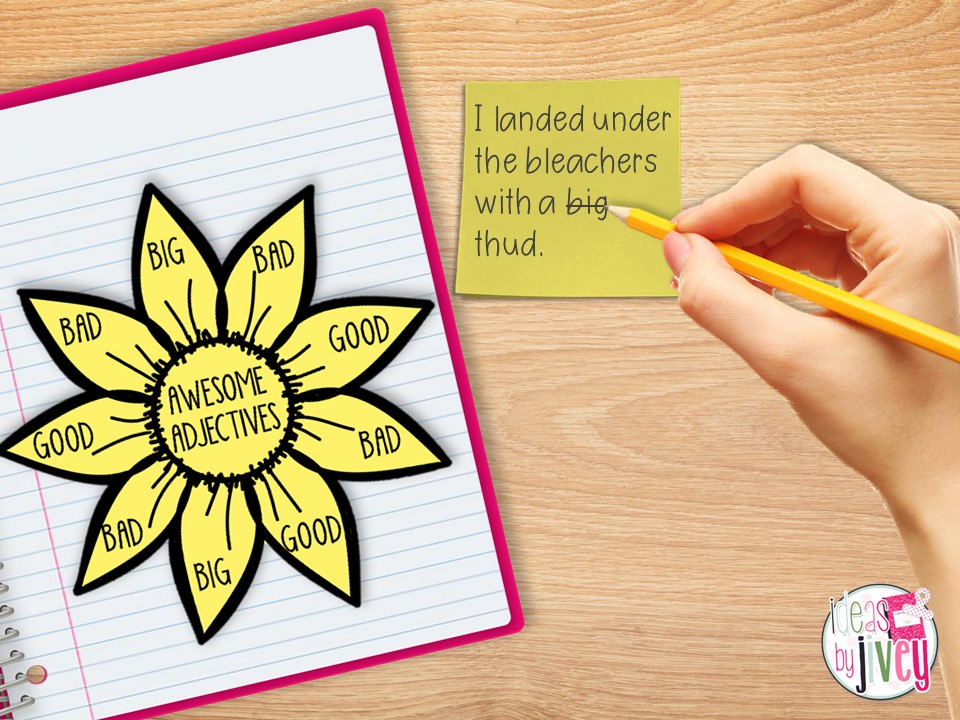
You might work together as a class to revise these or you could have them look at a sentence as a small group or with a partner and talk about what they could do to change the word bad. You might even do one as a whole class, and then send them off to work more independently. Even if they work with a partner or a group, make sure to still allow them to share out to the class because they’ll be able to hear how even the same sentence was revised in different ways, or with different words.
Make sure you’ve read the mentor text before you start Day Three. Students should use the context of the book/sentence to help them revise, just as they would in their own writing. This helps them understand, for instance, they aren’t just adding ANY adjectives, but adjectives that actually describe the character. And of course, it helps them feel invested in the lessons for the week because they are connected to the literature.
What if students just copy your revised model? Well, first of all, they’re going to realize really quickly that the sentence that they’ve just copied straight from yours on the board is not going to be one of those exciting ones that get to be shared. But hey, at least those students have a good version of a revised sentence in their notebook that they can look back at and refer to as a good way to revise a sentence by adding these adjectives. To help guide them away from copying yours, as they are working on their revision, point out one of the words they copied and say, “Oh, I noticed you used shy, too. Can you think of another word that we could put there? What’s another way we could describe the seed?” This helps set the expectation that you want them to be creative and think of their own ideas, too.
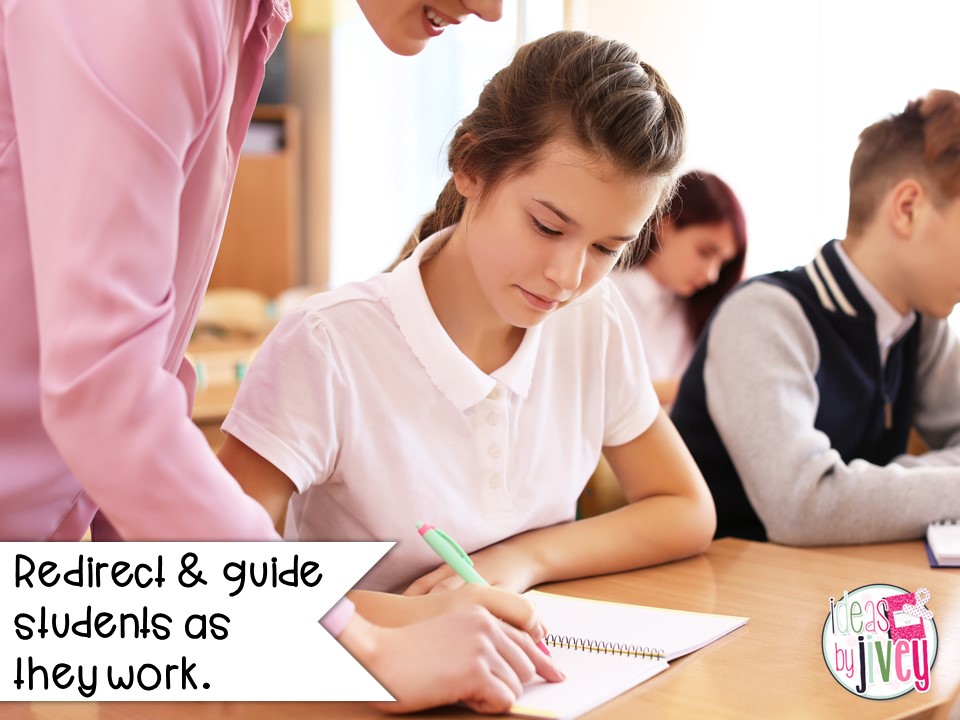
Ready to move on in the routine? Head to the next post!
